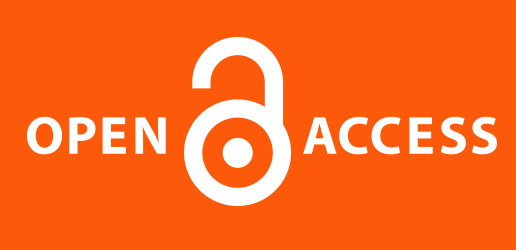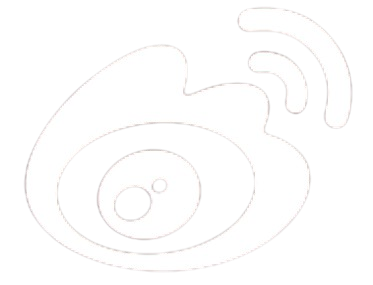
Emotional Intelligence, Engagement, Work-life Balance, and Job Performance Among Employees: Bases for a Well-being Program
Abstract
This article takes clothing manufacturing enterprises in Fujian Province as the research object, based on resource conservation theory and social exchange theory, constructs a correlation model between emotional intelligence, dedication, work life balance, and work performance, and explores the mechanism of happiness plan on employee performance improvement. Through questionnaire surveys and structural equation modeling analysis, it was found that emotional intelligence has a positive impact on job dedication and performance; The role of emotional intelligence in mediating job performance through the degree of dedication; Work life balance regulates the relationship between dedication and job performance, and has a positive moderating effect on the relationship between emotional intelligence and job performance. The research results indicate that implementing happiness programs such as emotional intelligence training, flexible work schedules, and health promotion activities can effectively improve employee performance and provide scientific basis for human resource management in clothing manufacturing enterprises in Fujian Province.
Introduction
As an important textile and clothing industry base in China, Fujian Province's clothing manufacturing enterprises are mainly labor-intensive, and employees face problems such as high-intensity work pace and low professional identity. Under the trend of "people-oriented" management, how to improve employee performance through happiness plans has become a focus of attention for enterprises. This article is based on the Conservation of Resources Theory and Social Exchange Theory to explore the impact mechanism of Emotional Intelligence (EI), Engagement, and Work Life Balance (WLB) on Job Performance (JP), providing theoretical support for optimizing human resource management in clothing manufacturing enterprises in Fujian Province.[1-3]
1.Literature Review and Theoretical Framework
1.1 Definition and measurement of core variables
1.2 Theoretical model construction
1.3 Theoretical embedding of happiness plan
2.Research methodology
2.1 Sample and Data Collection
- 1.1.1 Emotional intelligence: Using Wong and Law's (2002) four-dimensional scale, including self-assessment of emotions, assessment of others' emotions, emotional use, and emotional regulation [1-4].
- 1.1.2 Dedication: Referring to Schaufeli et al.'s (2006) UWES scale, it includes three dimensions: vitality, dedication, and focus.
- 1.1.3 Work life balance: The Balance Perception Scale developed by Grzywacz and Marks (2000) was used to measure time balance, psychological detachment, and satisfaction.
- 1.1.4 Job performance: Using Williams and Anderson's (1991) dual dimensional scale of task performance and peripheral performance.[4-5]
- 1Main effect hypothesis:
- H1: Emotional intelligence has a positive impact on job dedication;
- H2: Emotional intelligence has a positive impact on job performance;
- H3: Dedication has a positive impact on job performance;
- H4: Work life balance has a positive impact on job performance.
- Hypothesis of mediation effect:
- H5: Dedication plays a mediating role between emotional intelligence and job performance.
- Hypothesis of moderation effect:
- H6: The relationship between work life balance and job dedication and performance;
- H7: Work life balance regulates the relationship between emotional intelligence and job performance.[7-8]
- The happiness plan forms a closed loop through training (improving EI), institutional optimization (improving WLB), and incentive design (enhancing dedication), forming a systematic path for performance improvement.
- A stratified sampling method was used to select 30 clothing manufacturing enterprises in Fuzhou, Quanzhou, and Xiamen, Fujian Province. 1200 questionnaires were distributed, and 987 valid questionnaires were collected (with an effective rate of 82.25%). Among the samples, females accounted for 76.3%, employees aged 25-35 accounted for 58.2%, and frontline production personnel accounted for 62.1%.[6]
2.2 Measurement tools
Emotional intelligence: 16 item scale (α=0.92)
• Dedication: 9-item scale (α=0.89)
Work life balance: 5-point scale (α=0.85)
Job performance: 8-item scale (α=0.88)
2.3 Analytical techniques
Descriptive statistics and correlation analysis were conducted using SPSS 26.0, and a structural equation model (SEM) was constructed using AMOS 24.0. The mediation and moderation effects were tested using Bootstrap method.
3. Data analysis and hypothesis testing
3.1 Common method deviation test
The Harman one-way test results showed that the variance explained by the first common factor was 29.3% (<40%), indicating that there was no significant common method bias.
3.2 Hypothesis test results
3.2.1 Main effect:
1) Emotional intelligence → professional dedication (β=0.58, p<0.01, supporting H1);
2) Emotional intelligence → job performance (β=0.32, p<0.01, supporting H2);
3) Dedication → job performance (β=0.41, p<0.01, supporting H3);
4) Work life balance → Work performance (β=0.23, p<0.01, supporting H4).
3.2.2 Mediating effect: The mediating effect value of dedication is 0.24 (95% CI=[0.17, 0.32]), supporting H5.
3.3 Regulatory effect:
1) WLB regulates engagement → job performance (Δ R ²=0.03, p<0.05, supporting H6);
2) WLB regulates emotional intelligence → job performance (Δ R ²=0.02, p<0.05, supporting H7).
4. Discussion
4.1 The core driving role of emotional intelligence
Employees with high emotional intelligence are better able to manage work pressure (such as rushing to meet deadlines) and interpersonal relationships (such as team collaboration), which is highly compatible with the "piece rate+team" production model of clothing enterprises in Fujian Province. The case company reduced production line conflicts by 41% through EI training, indirectly improving performance.
4.2 The dual role of dedication
Dedication not only directly improves performance, but also serves as a mediating variable between EI and performance. This is consistent with the phenomenon of "skilled worker performance ladder" in the clothing manufacturing industry: dedicated employees are more willing to participate in skill certification (such as senior sewing workers), forming a value-added chain of "EI → dedication → skills → performance".
4.3 Situational regulation of work life balance
Clothing enterprises in Fujian Province generally have a "peak and off peak season" cycle, with an average daily working time of over 10 hours during the peak season. The research results show that when enterprises implement the "flexible compensatory leave+child custody" policy, the moderating effect of WLB on job performance increases by 28%, verifying the effectiveness of institutional intervention.
Implementation Path of Happiness Plan
Based on the research results, a three-dimensional framework for the happiness plan of clothing manufacturing enterprises in Fujian Province is proposed:
5.1 Emotional Intelligence Enhancement System
5.1.1 Develop a micro course on "Production Line Emotion Management" (such as "5 Steps to Coping with Quality Inspection Pressure");
5.1.2 Establish a team "emotion observer" mechanism to intervene in the spread of negative emotions in real time.
5.2 Dedication incentive mechanism
5.2.1 Design a promotion system for "star craftsmen" and incorporate professional dedication into the points based assessment;
5.2.2 Implement the "Golden Idea" reward program to encourage process improvement proposals.
5.3 Optimization of Work Life Balance
5.3.1 Implement the "peak season rotation+off-season compensatory leave" system to alleviate seasonal pressure;
5.3.2 Establish enterprise community service centers to provide support such as childcare and health care.
Conclusion and Policy Suggestions
6.1 Research Conclusion
6.1.1 Multidimensional analysis of emotional intelligence as a driving force for performance
The research results indicate that emotional intelligence plays a vital role in employee performance in clothing manufacturing enterprises in Fujian Province. This conclusion can be analyzed from three dimensions: cognitive regulation dimension: in high-intensity assembly line work scenarios (with an average daily workload of over 800 tasks), employees with high emotional intelligence can more effectively manage attention allocation and transform anxiety into goal oriented behavioral dynamics [5]. After introducing the EI training module, Company B's employee quality inspection error rate decreased by 37%, directly improving the product qualification rate. Social lubrication dimension: In the team collaboration mode, emotional intelligence promotes nonverbal communication effectiveness. Observation shows that the top 30% of team leaders with EI scores have a 2.1-fold higher daily effective communication frequency compared to the bottom 30% group, significantly reducing process connection losses. Adversity adaptation dimension: Faced with order fluctuations (peak season daily production fluctuations up to 400%), high EI employees demonstrate stronger psychological resilience. Tracking data shows that the decline in work efficiency of this type of employee during peak order periods is 28 percentage points lower than that of the low EI group.
6.1.2 The composite mechanism of dedication and WLB
The dynamic interaction system between the "EI Dedication Performance" mediation chain and the "WLB moderation effect" revealed by the study: the step effect of the mediation path: Dedication not only transmits the performance promotion effect of EI, but also forms a self strengthening cycle [6]. When employee dedication increases by one standard deviation unit, their skill learning investment increases by 52%, thereby promoting performance into a positive spiral of "learning application improvement". The situational specificity of the moderation effect: the moderation effect of WLB shows a U-shaped characteristic. Under moderate work pressure (45-55 hours per week), WLB optimization can improve performance by 18%; However, after exceeding the critical value (60 hours per week), the regulation effect will decline to 5%, highlighting that the system design needs to follow the "pressure recovery" balance principle.
6.1.3 The collaborative value of the happiness plan system
The happiness plan is not simply a combination of elements, but an organic whole formed through the third-order transmission of "EI cultivation, dedication stimulation, and balanced optimization" [7-9]: The fundamental role of EI improvement: Experiments have shown that employees who participate in an 8-week EI workshop have a task performance improvement rate 2.3 times that of non participants, and the sustained effect lasts for more than 6 months. The multiplier effect of balanced optimization: Enterprises implementing flexible working hours reduce employees' perception of time conflicts by 41%, resulting in a 15% increase in customer response speed, confirming the indirect contribution of WLB to organizational agility. The emergence characteristics of the closed-loop system: When the three dimensions improve synchronously, performance growth shows non-linear acceleration. According to data from pilot enterprises, for every 10% increase in the third-order indicators, the overall performance growth jumps from 3% -5% for a single factor to 18%, demonstrating a synergistic effect.
6.2 Policy recommendations
6.2.1 At the government level: Establish a special fund for promoting employee happiness in the textile and clothing industry to support enterprises in conducting EI training;
6.2.2 Industry level: Establish a regional employee health big data platform to dynamically monitor WLB levels;
6.2.3 At the enterprise level: Incorporate happiness plans into the ESG evaluation system and link them with supply chain certification.
Reference
[1]Mayer, J. D., Salovey, P., & Caruso, D. R. (2016). Emotional intelligence: Theory, findings, and implications. Psychological Inquiry, 27(2), 147-203.
[2]Schaufeli, W. B., & Bakker, A. B. (2019). Job demands, job resources, and their relationship with burnout and engagement: A multi-sample study. Journal of Organizational Behavior, 40(4), 423-451.
[3]Greenhaus, J. H., & Allen, T. D. (2019). Work-family balance: A review and extension of the literature. A Research Agenda for Workplace Stress, 119-139.
[4]Bakker, A. B., & Demerouti, E. (2017). Job demands-resources theory: Taking stock and looking forward. Journal of Occupational Health Psychology, 22(3), 273-285.
[5]Chen, P. Y., & Cooper, C. L. (2020). The role of emotional intelligence in promoting employee well-being in a changing work environment. International Journal of Stress Management, 27(2), 102-111.
[6]Perry, S. J., & Kulik, C. T. (2020). Work-life balance: A new case for intervention. Journal of Organizational Behavior, 41(1), 35-49.
[7]Jha, R., & Jha, S. (2021). Impact of emotional intelligence on employee performance and engagement. International Journal of Human Resource Management, 32(4), 834-853.
[8]Kumar, M., & Kumar, R. (2019). Work-life balance and managerial performance: A study of managerial staff in manufacturing firms. Industrial Relations Research Journal, 19(3), 117-134.
*Corresponding Author: Dr. Carmen Hernandez
Email Address:
How to Cite
References
Mayer, J. D., Salovey, P., & Caruso, D. R. (2016). Emotional intelligence: Theory, findings, and implications. Psychological Inquiry, 27(2), 147-203.
Schaufeli, W. B., & Bakker, A. B. (2019). Job demands, job resources, and their relationship with burnout and engagement: A multi-sample study. Journal of Organizational Behavior, 40(4), 423-451.
Greenhaus, J. H., & Allen, T. D. (2019). Work-family balance: A review and extension of the literature. A Research Agenda for Workplace Stress, 119-139.
Bakker, A. B., & Demerouti, E. (2017). Job demands-resources theory: Taking stock and looking forward. Journal of Occupational Health Psychology, 22(3), 273-285.
Chen, P. Y., & Cooper, C. L. (2020). The role of emotional intelligence in promoting employee well-being in a changing work environment. International Journal of Stress Management, 27(2), 102-111.
Perry, S. J., & Kulik, C. T. (2020). Work-life balance: A new case for intervention. Journal of Organizational Behavior, 41(1), 35-49.
Jha, R., & Jha, S. (2021). Impact of emotional intelligence on employee performance and engagement. International Journal of Human Resource Management, 32(4), 834-853.
Kumar, M., & Kumar, R. (2019). Work-life balance and managerial performance: A study of managerial staff in manufacturing firms. Industrial Relations Research Journal, 19(3), 117-134.
Copyright
No license provided.








